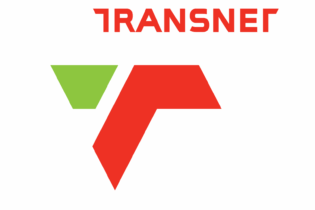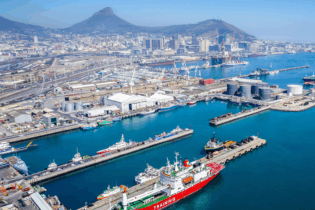Innovative technology is needed to help realise port efficiency in Durban for the benefit of all in the logistics chain, says Tristan Wiggill.
If the port of Durban were able to offer potential shipping lines, or other clients looking to use the port, some unbiased performance statistics –from both the water- and land-based sides – it would become a world leader. Harbour Carriers stalwart Kevin Martin suggests that a telematics system be developed that not only look inwards – that is, to what a driver is doing and the manner of diesel consumption – but outwards, to the macro operating environment. “We need measurements in key points – perhaps using satellite tracking – that are independent and immutable. We would all benefit from satellite tracking that monitors our operating environments, and publishes that information publicly. We could then list the best and worst performers at a terminal on a month-by-month basis or week-by-week basis,” he says. “It would be of great benefit if we could list the best depots and the best warehouses. Once that information is freely available, cargo owners could make a choice, based on unbiased information. In this way, we would start to solve problems in the logistics chain, because we’d be holding everyone accountable to their performance. It is not only Transnet that delays the transporters, but also the warehouses, the depots, clients, and clearing and forwarding agents. Lots of people add to the inefficiencies of a logistics chain and, so, we should not only hold Transnet to account,” he says. Results driven“There has been a lot of work done on the terminals in the port,” says Rosario Sarno, managing director, Mediterranean Shipping Company (MSC). “However, issues still remain, most of which relate to issues caused by the draft. When dredging is being done, Transnet Port Terminals has to close some berths. This has created problems for us in the last three months.”
Sarno says the Durban port’s draft is simply not adequate. “It is the shallowest of the eight commercial ports in the country. It’s quite extraordinary if you consider that Durban is the biggest and busiest port in South Africa and the most important to the country.” Although the port’s mouth has been widened, he says the entrance to the terminals is a problem. Trucks also queue up outside the entrance to the port. “I feel for the road transport industry because drivers get paid by the trip. Overall port productivity has improved, but it is not at the optimal levels we desire. I believe more cranes need to be working the ships. Again, work is being done to address this and, compared with two years ago, the situation is much, much better. However, moving 150 boxes inside three days is a big challenge,” he says. Martin believes that land usage should become a criterion in the measurement of port efficiency. “Ten years ago, we were doing eight loads in a shift; today we are doing one-and-a-half, maybe two loads per shift. We spend billions of rands upgrading the port and we’ve gone from 1 500 gate moves a day at pier 2 in Durban to 3 000 gate moves but, in terms of road transport efficiency, we’ve gone back by about 75%. “If you consider the Port Regulator’s Report and compare land usage between ourselves and the port in Shanghai, we’ve got 180 hectares and they’ve got 302 hectares. If we were to pro-rata it, we would be capable of doing 17.7 million containers per annum, not 2.6 million and then tell everyone we’ve got no space. Investments aside, we need to find better ways of using the space we have,” he says.







